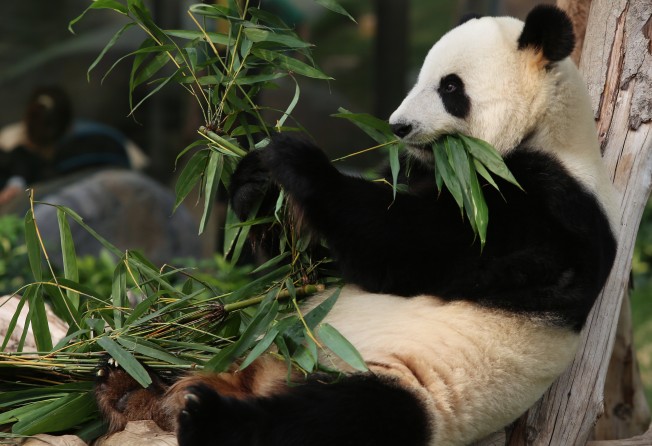China’s designers want to tell the fashion story without bamboo and pandas
China’s US$300 billion apparel market is a big draw to domestic and global brands, from luxury to fast fashion players

As some international fashion brands continue to adopt bamboo, panda and dragon motifs into their designs to appeal to Chinese consumers, their Chinese counterparts are telling the fashion story without such “superficial” elements.
One of them is Hong Kong-listed JNBY, short for “Just Naturally Be Yourself”, a Chinese fashion brand that has over 700 retail stores in China and overseas operations in 12 countries.
Frank Zhu, chief financial officer of the company said JNBY wanted to appeal to consumers with their designs, not with “Chinese elements”.
“I feel there is still a large number of people who see China only as a manufacturing hub,” said Zhu in an interview with the South China Morning Post.
“They don’t have the concept of ‘designed in China’ but only have the very old ‘made in China’ mentality.”
But Zhu said he had been encouraged by an encounter with a famous fashion designer who claimed to be a fan of Croquis, the company’s brand for men’s wear.
“When I told him it is designed in China, he was quite surprised,” Zhu said.
China’s apparel market is an enticing one for local and international brands alike.
Valued at close to US$300 billion by OC&C Strategy Consultants, the lucrative market has attracted numerous international heavyweights ranging from luxury brands such as Gucci, Louis Vuitton and Chanel to fast fashion chains including Zara, H&M, and Uniqlo.

For instance, Calvin Klein, Estee Lauder, and Dolce & Gabbana raced to roll out special edition chinoiserie pieces with gold dragons, blue phoenixes and red roosters during Chinese new year in February this year.
“International brands tend to adopt different market strategies to cater to customers in different countries,” said Tang Xiaotang, founder of Chinese retail consultancy Nofashion.
“So it’s no surprise that they add Chinese elements to their products.
“As Chinese customers are less receptive to Chinese brands compared with international ones, it is natural for domestic brands to try to be more like global brands and use more international design elements,” Tang said.
So it’s no surprise that they add Chinese elements to their products
While international brands continue to woo Chinese consumers with China-targeted designs, Chinese designers and brands like JNBY want to be seen as an international label, especially in overseas markets.
Hangzhou-based JNBY has the biggest share of the mainland China market among Chinese designer apparel brands, according to CIC, a data monitoring agency. Its net profit for the six months ended December 31 rose 24 per cent to 227.9 million yuan (US$33.9 million), compared with 183.8 milllion yuan for the same period in 2015.
The company, which listed last October, was founded by designer Li Lin in 1997 in Hangzhou. It has six apparel brands including the company’s most profitable women’s wear JNBY, men’s wear Croquis, jnby by JNBY for children, and upscale labels, less and Pomme de terre.

Veronica Wang, associate partner at OC&C Strategy Consultants said the secret of JNBY’s success was sticking to a natural and authentic style.
“They are very smart to have targeted at a very specific and niche group of customers, whose main focus is on the design of clothes, and not the brand,” she said.
They are very smart to have targeted at a very specific and niche group of customers, whose main focus is on the design of clothes, and not the brands
According to a recent study released by OC&C Strategy Consultants, the proportion of Chinese shoppers favouring local brands has more than doubled to 46 per cent from 22 per cent two years ago, driven mainly by younger customers aged between 16 and 44.
But most Chinese apparel brands are still suffering from an uncompetitive marketing strategy and appealing product design, as well as lacking a clear focus on their target customers, compared to their foreign peers who have dominated the top spots in the mainland China market.
“You could not simply say, ‘I want to sell to all aged 20 to 40’,” said Wang. “You have to figure out which target group you want clearly.”
JNBY’s Zhu agreed, adding that the company was very clear from the start who were their target shoppers.
“We want people who have the ability to think independently,” he said.